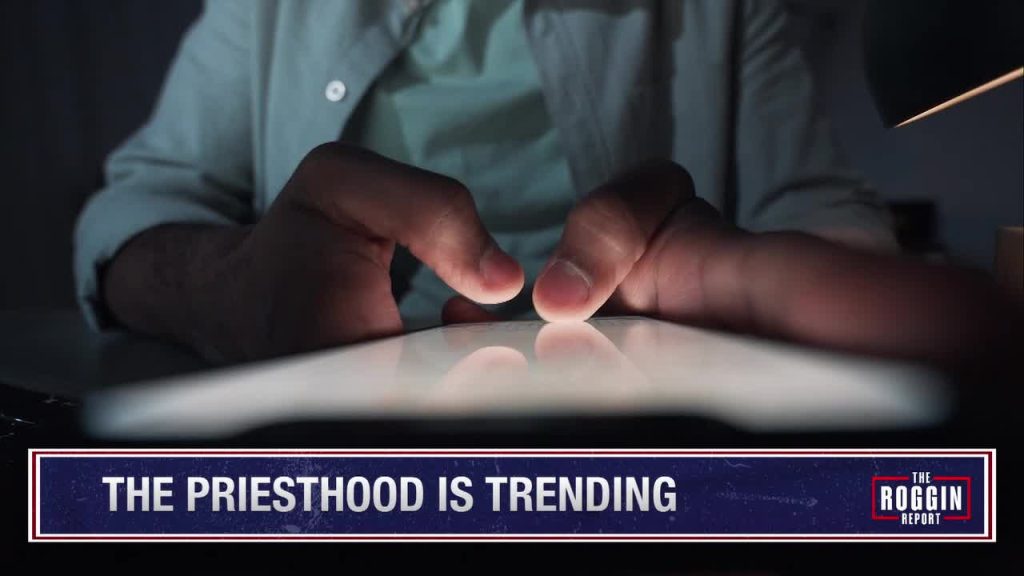Social Media’s Surprising Impact: Is the Priesthood Trending for Gen Z?
The hallowed halls of religious institutions aren’t typically associated with the fast-paced, trend-driven world of social media. Yet, a surprising phenomenon is unfolding: Gen Z, the digital natives who came of age with smartphones and social media, are demonstrating a newfound interest in religious vocations, and social media platforms play a significant role in this unexpected resurgence. No longer confined to traditional recruitment methods, religious organizations are leveraging the power of platforms like TikTok, Instagram, and YouTube to connect with younger audiences, showcasing the human side of religious life and sparking conversations about faith in a way that resonates with this tech-savvy generation. This digital embrace is contributing to a renewed interest in the priesthood and other forms of religious service, challenging the narrative of declining religious adherence amongst young people.
While overall religious affiliation continues to decline in many Western countries, pockets of renewed spiritual seeking are emerging, particularly among Gen Z. This generation, faced with a complex and often uncertain world, grapples with existential questions about purpose, meaning, and belonging. Social media, often criticized for its superficiality and fleeting trends, unexpectedly offers a platform for exploring these deeper themes. Religious leaders and organizations are capitalizing on this opportunity by crafting engaging content that speaks to Gen Z’s concerns, using humor, relatable stories, and authentic depictions of religious life to dispel misconceptions and present faith as a relevant and meaningful path. The traditional image of the stern, inaccessible clergyman is being replaced by approachable figures who engage in open dialogue, answer questions, and even participate in viral trends, effectively bridging the gap between ancient traditions and contemporary culture.
This surge in online religious content is proving remarkably effective. The bite-sized, visually appealing format of platforms like TikTok allows for the dissemination of complex theological concepts in an easily digestible manner. Short videos showcasing the daily lives of priests, nuns, and other religious figures offer a glimpse into the human side of these vocations, highlighting the joy, community, and sense of purpose that can accompany a life dedicated to service. These platforms also facilitate a sense of community among young people interested in exploring faith, fostering connections and providing support networks that can be crucial in navigating the journey towards religious life. By leveraging the interactive nature of social media, religious organizations create spaces for dialogue, allowing young people to ask questions, share their experiences, and explore their spirituality in a supportive and engaging environment.
The impact of social media on religious vocations extends beyond mere recruitment. It fosters a deeper understanding and appreciation for the complexities of faith in a generation often characterized by skepticism and a preference for personalized spirituality. By showcasing the diverse experiences within religious communities, these platforms challenge stereotypes and offer a more nuanced perspective on what it means to live a life of faith. The accessibility of online resources also enables young people to explore different religious traditions and denominations, allowing them to make informed decisions about their spiritual path. This access to information empowers individuals to take ownership of their faith journey, fostering a more personal and meaningful connection with their chosen religion.
However, the integration of faith and social media presents certain challenges. The fast-paced and often superficial nature of these platforms can sometimes trivialize complex religious concepts. The pressure to create engaging content can lead to a focus on entertainment over substance, potentially sacrificing depth and authenticity for the sake of virality. Furthermore, the potential for misinformation and the spread of extremist ideologies within online religious communities requires careful monitoring and moderation. Religious organizations navigating this digital landscape must strike a balance between leveraging the power of social media for outreach and ensuring the responsible and ethical dissemination of religious teachings.
Despite these challenges, the growing influence of social media on Gen Z’s engagement with religion remains undeniable. These platforms provide a valuable tool for connecting with young people, fostering dialogue, and promoting a deeper understanding of faith. While the long-term impact of this digital resurgence remains to be seen, it offers a glimmer of hope for religious institutions seeking to engage a generation increasingly detached from traditional forms of religious practice. As Gen Z continues shaping the future of faith in the digital age, the intersection of social media and spirituality will undoubtedly continue to evolve, presenting both opportunities and challenges for religious communities worldwide.


